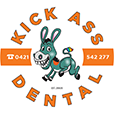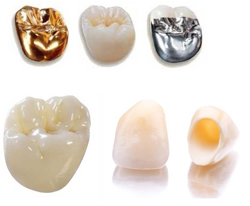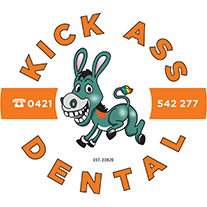What Are the 3 Types of Crowns?
What are the 3 types of crowns? If you have a tooth that is decayed or injured, your dentist may suggest getting a dental crown so that the tooth can regain its strength, form, and size. A crown is a cap in the shape of a tooth that is placed over the full region of the tooth that is visible above the gumline. It is fixed in place using cement, and if it is cared for and maintained properly, it has the potential to last for many years.
There are various distinct kinds of dental crowns, and each has a set of benefits and drawbacks that are exclusive to itself. In this post, we will go over the characteristics of the three different types of dental crowns that are the most prevalent.
1. Porcelain Crowns
Because they mirror the translucency and natural appearance of real teeth, porcelain crowns are a popular alternative for restoring front teeth. This is because porcelain crowns seem just like real teeth. Because they are crafted from a ceramic material that is matched to the shade of your natural teeth, they are practically impossible to differentiate from the teeth that surround them.
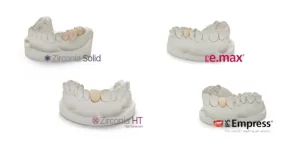
Because they do not contain any metal, porcelain crowns are also a wonderful option for patients who suffer from metal allergies. Because they are sturdy, long-lasting, and resistant to stains, they are a choice that requires very little upkeep. However, they are susceptible to breaking or chipping when subjected to excessive force, such as when chewing on tough foods, because they are brittle.
2. Metal Crowns
Metal crowns are the most resilient and long-lasting type of crown, and they are often fabricated from alloys of gold, nickel, or chromium. As a result of their resistance to wear and tear, corrosion, and fracturing, they are a dependable material choice for molars, which are subjected to a great deal of pressure due to chewing.
People who have a strong bite might find that metal crowns are the most comfortable option because they cause the least amount of damage to the adjacent teeth. However, they have a metallic appearance, which can make them unattractive for front teeth because of the way they seem. If the crown is placed on a tooth that is visible in the mouth, it may also result in the development of a bluish-gray line at the gumline over time. This change may be evident.
3. Ceramic Crowns
Crowns made of ceramic are composed of zirconia, a long-lasting substance that has the appearance of tooth enamel and is resistant to chipping and cracking. Because they can be moulded and coloured to look exactly like the patient’s original teeth, dental veneers are an ideal option for replacing either the front or the rear teeth.
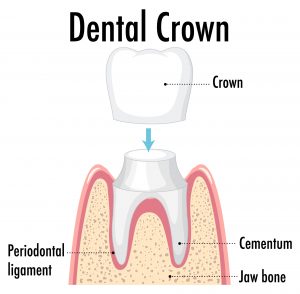
Because they are constructed completely of ceramic, ceramic crowns are also a wonderful choice for persons who are allergic to metal because they are a common dental restoration. They are biocompatible, which means that they will not induce an allergic reaction or irritate the gums in any way.
Ceramic crowns, on the other hand, are not as durable as metal crowns and can become worn down with time, particularly if the patient grinds their teeth. Crowns made of ceramic are more expensive than crowns made of metal or porcelain. https://kickassdental.com.au/
Conclusion
Choosing the appropriate variety of dental crown is dependent on a number of criteria, including the location of the injured tooth, your preferences about aesthetics, and the amount of money you have available. Your dentist will be able to assist you in determining which type of crown would be most appropriate for your circumstances and offer you with the knowledge you require to make an educated choice.
It is crucial to maintain proper oral hygiene and schedule frequent dental check-ups in order to ensure the longevity and efficiency of your dental restoration. This is true regardless of the type of crown that you select to have placed on your tooth.
To summarise, porcelain crowns, metal crowns, and ceramic crowns are the most prevalent types of dental crowns. Ceramic crowns are the fourth most common type of dental crown. Each option comes with its own set of benefits and drawbacks, and the one that’s best for you relies on your specific requirements and personal tastes. A dental crown can restore both the function and appearance of a damaged tooth, making it possible for the patient to smile, eat, and speak normally again with full self-assurance. The procedure requires regular care and maintenance.
